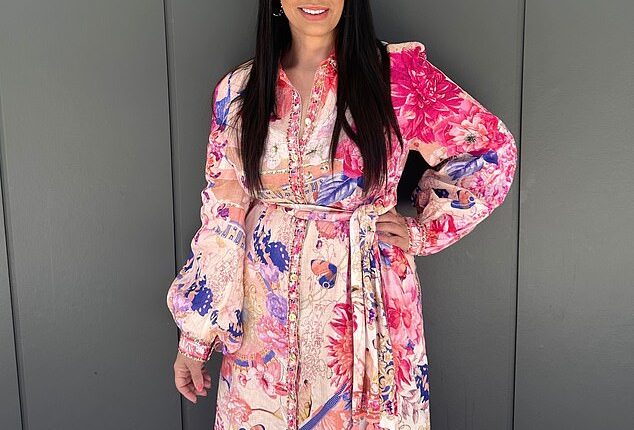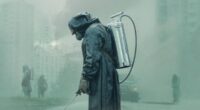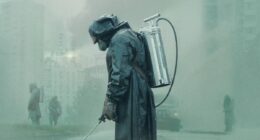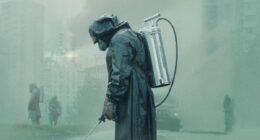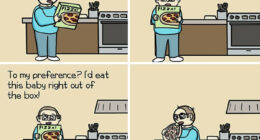A Sydney mum thought she was finally getting relief from crippling back pain with a routine breast reduction – only to wake up and discover her surgeon had found a cancerous lump.
Paula Correa went into hospital in August 2020 at 41 expecting smaller breasts and a fresh start.
Instead, she left with a stage three breast cancer diagnosis that turned her world upside down.
‘Thinking back, I experienced two short electric shocks on my breasts over Christmas 2019, but I brushed it off because it never happened again,’ she told the Daily Mail.
‘I didn’t know what to look for, or that it could be a symptom of cancer.
‘But if my doctor hadn’t taken that lump out, I would never have known. He saved my life.’
Paula had booked her surgery during the pandemic after an unexpected spot opened up.
While operating, her plastic surgeon spotted something unusual and decided to remove it.

A Sydney mum thought she was finally getting relief from crippling back pain with a routine breast reduction – only to wake up and discover her surgeon had found a cancerous lump

Determined to channel her experience into change, Paula joined the non-profit organisation So Brave, which supports women under 40 diagnosed with breast cancer
A week later, he called Paula back in – telling her to ‘bring someone’ with her to the appointment.
‘I knew something was wrong, but I didn’t know what,’ she recalled.
‘I remember seeing on the chart that he’d sent something off to pathology, but I didn’t think much of it.
‘When he said cancer, my heart just dropped. He had already set me up with an oncologist and surgeon so I saw them immediately after my appointment.’
Scans confirmed the disease had spread to her lymph nodes.
Eleven were removed during surgery, three of which tested positive.
‘It was so traumatic and unexpected. One day I was excited about getting my back fixed and healing from the pain, the next I was fighting for my life.’
The mum then went through 16 rounds of chemotherapy, followed by six weeks of daily radiation. Paula is now on long term hormone therapy for 10 years – ending in 2030.

Paula Correa went into hospital in August 2020 expecting smaller breasts and a fresh start
The diagnosis triggered anxiety so severe Paula couldn’t even walk into a shopping centre.
‘I felt like the world was caving in, that everyone was staring at me,’ she said.
Yet even while hooked up for hours of treatment, Paula refused to stop working.
‘I’d take my laptop to chemo just to keep my mind off it. I’m not someone who can sit still – I always try to soldier on.’
Her turning point came when she spotted a young boy at the hospital with no hair.
‘I thought, I’ve had 40 years of life – I’ve worked, had a child, travelled. That poor boy hadn’t even lived yet and he was already going through this trauma. From then on, I realised there’s always someone worse off.’
Paula began blogging her journey to spread awareness, encouraging other women to get their breasts checked.
‘The more I spoke about it, the more I was able to help others. It turned something terrifying into something positive.’

The diagnosis triggered anxiety so severe Paula couldn’t even walk into a shopping centre
Now five years on, Paula takes daily tamoxifen and monthly Zoladex injections.
But as doctors prepare to stop the treatments, she admits the fear of a recurrence lingers.
‘It’s like taking away my security blanket,’ she said.
Paula admitted she now lives with constant health anxiety.
Every ache and pain is enough to send her rushing back to her GP in fear the disease has returned.
‘Whenever I get a new pain, I panic,’ she confessed.
‘I’ve had a sore back that wouldn’t go away, and straight away I thought I was sick again.’
The same happened with her arm after fostering a little boy who would often pull on it.
‘I had an ache in my arm and immediately thought it was bone cancer. I went through all the scans before finally finding out it was just torn tendons – but in my head, it was already the worst-case scenario.’
Doctors even checked her heart recently after concerns about the heavy medication she’s been on for years.
‘I didn’t have symptoms, but because tamoxifen and Zoladex can affect your heart, they ran the tests just to be safe.
‘Thankfully, everything came back clear.’
Paula’s diagnosis also forced her to see who in her life would stand by her – and who would quietly drift away.
Her teenage son was just 17 when she broke the news, blurting it out the same day she learned the truth.
‘He had a friend over at the time, and he was really taken aback,’ she recalled.
‘Like most kids, he jumped straight on the internet to look up the life expectancy for someone with breast cancer.
‘That was the first thing he did. But then he came back to me and said, “Mum, there’s so much research, so many treatments – you’re going to be alright”.’
While her son’s reassurance gave her strength, not everyone around her coped as well.
Friends rallied at first, but some slowly disappeared.
‘I did lose close friends along the way,’ Paula admitted.
‘I think they just didn’t understand what I was going through, or didn’t know what to say. Others seemed to feel the attention wasn’t on them anymore – and of course this isn’t a spotlight anyone wants.’

Paula’s diagnosis also forced her to see who in her life would stand by her – and who would quietly drift away
One friend even criticised her for being ‘too positive’, struggling to accept that Paula chose to talk openly about her journey.
‘That didn’t bother me,’ she said firmly.
‘The more I spoke about it, the more I was able to help other women in the same situation. That was what mattered.’
If old friendships faded, new ones blossomed.
Through her blog and social media, Paula connected with other women living with breast cancer.
But those bonds were bittersweet.
‘Some of the women I met, their breast cancer came back and spread. Some are still fighting, but others didn’t make it,’ she said.
‘That’s why awareness is so important. Too many women don’t realise they have cancer until it’s too late. It’s heartbreaking.’
Determined to channel her experience into change, Paula joined the non-profit organisation So Brave, which supports women under 40 diagnosed with breast cancer.
She was shocked at how many were diagnosed during pregnancy, their symptoms dismissed as normal changes in breast milk.
‘Campaigns such as Uncomfortable Cup start important, often avoided, conversations and remind people that early detection matters and that breast cancer isn’t always obvious.
‘I hope it encourages more people to talk openly, get checked, and support one another through difficult journeys because silence can cost lives.’

Through her blog and social media, Paula connected with other women living with cancer
The symptoms to watch out for
Breast cancer is the most common cancer in Australian women, with more than 20,000 diagnoses every year.
While survival rates have improved, early detection is critical.
Doctors warn women to look out for:
- New lumps in the breast or armpit
- Changes in size or shape of the breast
- Persistent pain in the breast or armpit
- Dimpling, puckering or redness of the skin
- A nipple turning inward or unusual discharge
Anyone noticing unusual changes is urged to see a GP immediately. Regular mammograms are recommended for women over 40, while those with family history should seek advice about earlier screening.
‘Don’t wait,’ Paula said.
‘I was lucky. If my surgeon hadn’t found that lump, I might not be here today.’
Breast Cancer Network Australia helps ensure that all Australians who are affected by breast cancer receive the very best care, treatment and support.
Together with Tetley, BCNA has launched a new national initiative called The Uncomfortable Cup to encourage Australians to have difficult but necessary conversations about breast cancer.
Tetley is raising funds to support the BCNA through a limited-edition pink pack of Tetley Tea Cup 100s. Five cents for every pack sold will be donated to BCNA. Learn more and donate at www.tetley.com.au/theuncomfortablecup/
For more information go to bcna.org.au or call the free and confidential hotline on 1800 500 258.
